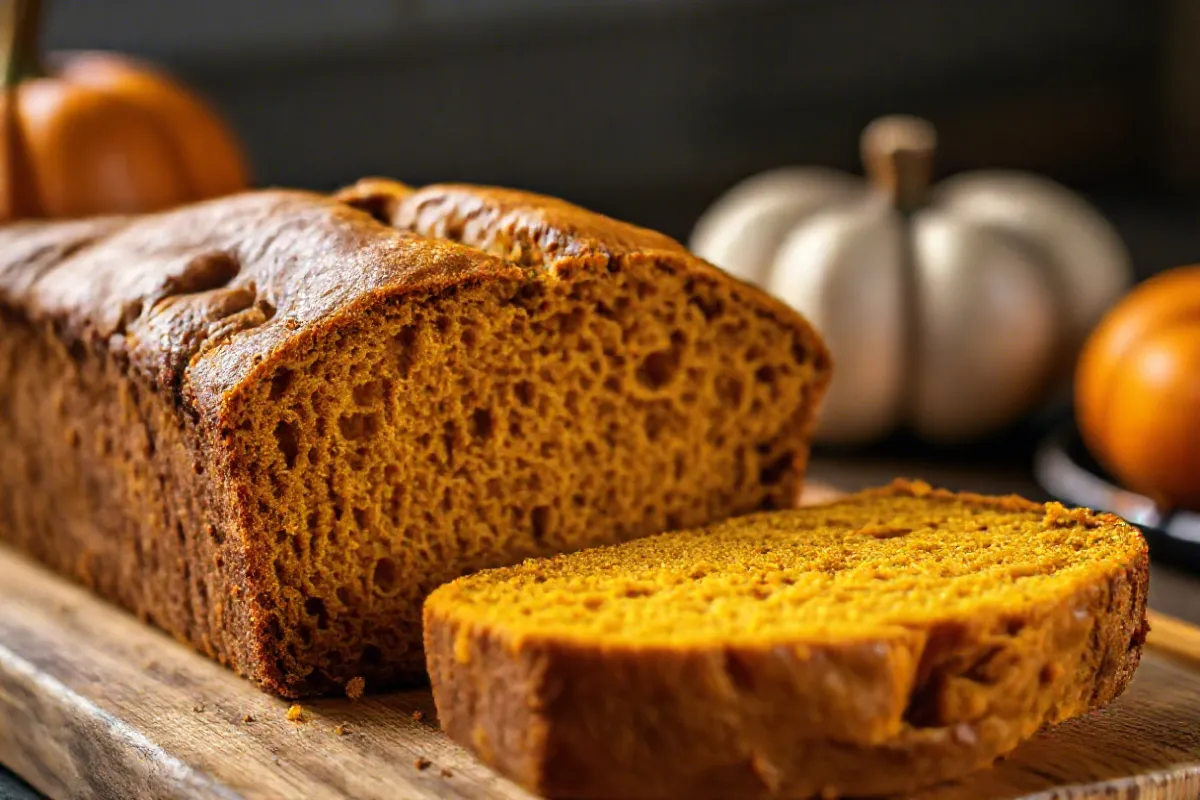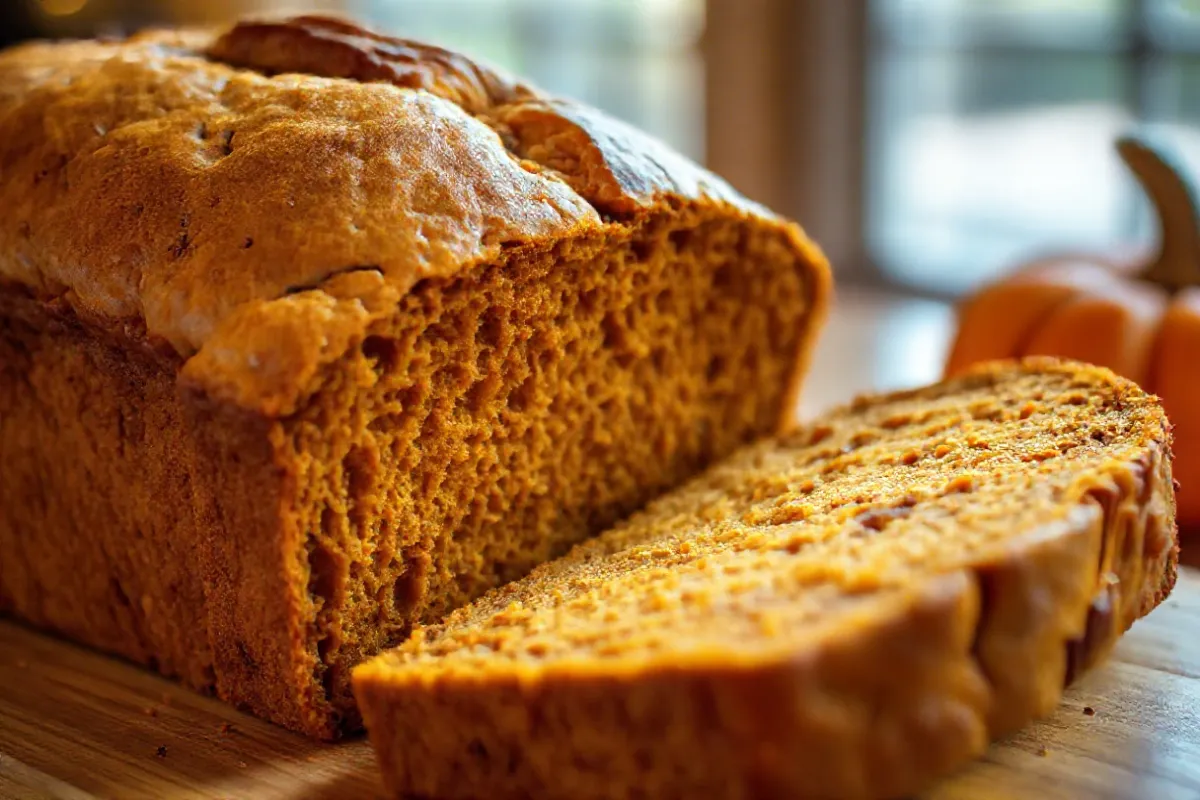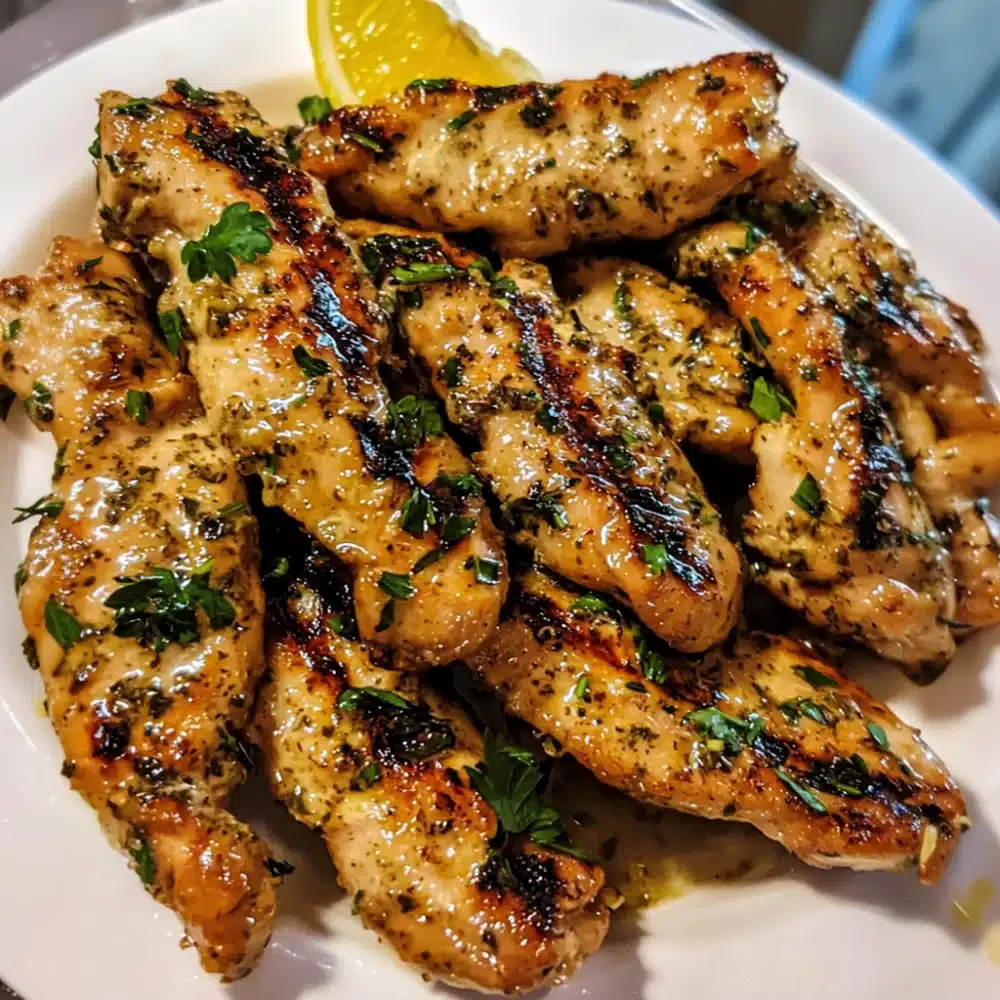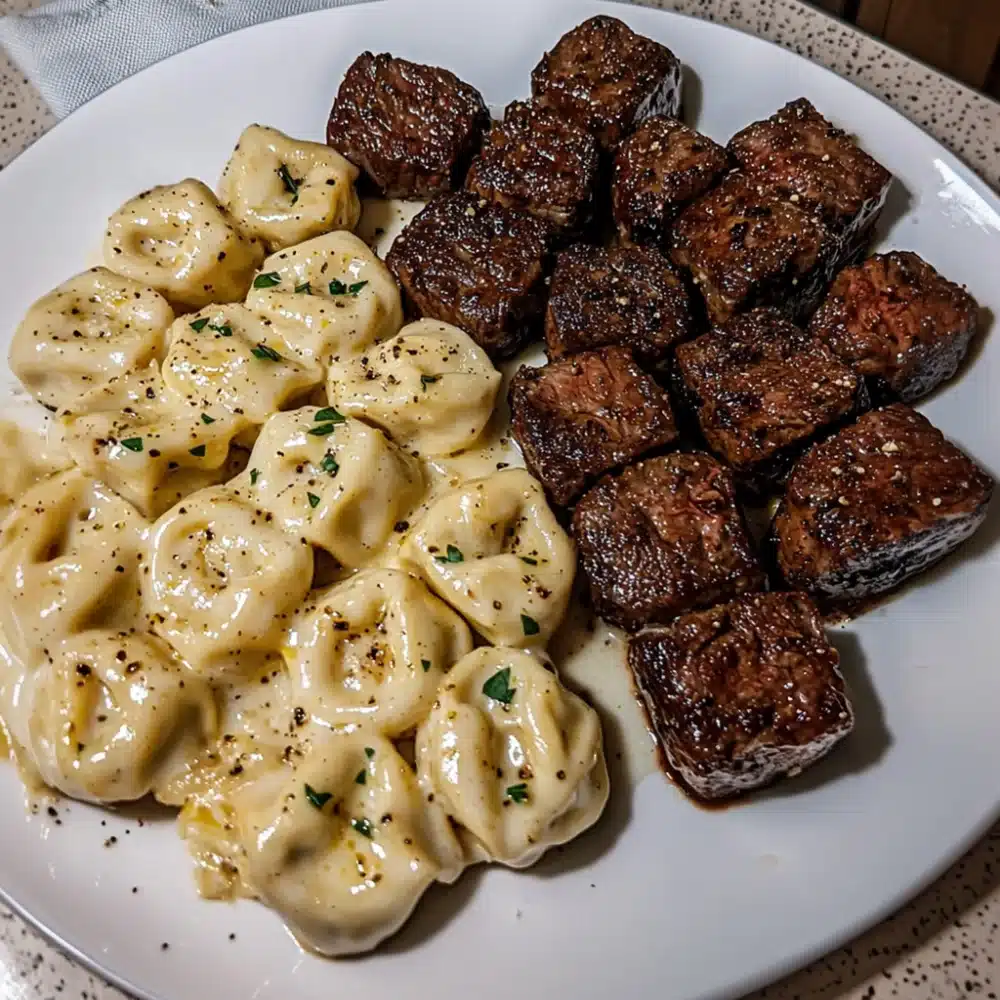Downeast Maine Pumpkin Bread is a beloved autumn staple, known for its rich, spiced flavor and incredibly moist texture. This bread is perfect for chilly mornings, cozy afternoons, or as a festive holiday gift. The recipe hails from the coastal region of Maine, where the crisp fall air calls for something warm and comforting straight from the oven. Whether you’re a seasoned baker or just starting, this guide will help you create the perfect loaf of Downeast Maine Pumpkin Bread, complete with variations, serving suggestions, and tips for achieving the best results.
What Makes Downeast Maine Pumpkin Bread Special?
Downeast Maine Pumpkin Bread stands out from other pumpkin bread recipes due to its deep, warming spice blend and its incredibly moist crumb. The combination of cinnamon, nutmeg, ginger, and cloves creates a flavor profile that is both comforting and complex, making it a favorite for fall baking. This bread is traditionally made with canned pumpkin puree, which provides a smooth, rich base for the spices and ensures a moist texture. The recipe is versatile, allowing for various add-ins like nuts, chocolate chips, or dried fruit, making it a customizable treat for any occasion.
A Taste of New England
Originating from the Downeast region of Maine, this pumpkin bread is more than just a dessert—it’s a slice of New England tradition. The recipe reflects the region’s love for hearty, spiced foods that can warm you from the inside out during the cold months. The use of pantry staples like canned pumpkin, flour, and spices makes this bread accessible and easy to prepare, even for novice bakers. Its popularity has spread far beyond Maine, but the heart of this recipe remains rooted in its New England origins.
For those looking to explore more traditional New England recipes, consider trying your hand at other regional classics like clam chowder or blueberry pie. The emphasis on simple ingredients and bold flavors is a hallmark of New England cuisine.
Key Ingredients for Downeast Maine Pumpkin Bread
Simplicity is what makes Downeast Maine Pumpkin Bread so beautiful. The ingredients are likely ones you already have in your pantry, and the recipe is forgiving enough to accommodate substitutions or adjustments based on your preferences.
Essential Ingredients
- Pumpkin Puree: The star of the show, pumpkin puree gives the bread its signature flavor and moist texture. Make sure you use pureed pumpkin instead of pumpkin pie filling, which has additional spices and sugars.
- Flour: All-purpose flour is the standard, but you can also use a combination of whole wheat and all-purpose flour for a slightly denser loaf.
- Sugar: This recipe typically calls for white sugar, but you can substitute some or all of it with brown sugar for a deeper, more caramel-like flavor.
- Vegetable Oil: Oil maintains the bread’s softness and moisture.You can substitute it with melted butter for a richer taste.
- Eggs: Eggs provide structure and stability, helping the bread rise and stay moist.
- Spices: A blend of cinnamon, nutmeg, ginger, and cloves gives the bread its warm, spiced flavor.
- Baking Soda: This leavening agent helps the bread rise, giving it a light and fluffy texture.
- Salt: A small teaspoon of salt cuts through the sweetness and brings out the nuances.
Substitutions and Add-Ins
- Canned vs. Fresh Pumpkin: While canned pumpkin puree is convenient and consistent, you can use fresh pumpkin puree if you prefer. Making your own is simple—just roast a small sugar pumpkin, scoop out the flesh, and puree it until smooth. Get the recipe for homemade pumpkin puree here.
- Sugar Alternatives: For a lower-sugar option, consider using honey or maple syrup in place of some of the sugar. Keep in mind that these will add moisture to the batter, so you may need to adjust the amount of flour slightly.
- Add-Ins: Feel free to mix in chopped nuts, dried cranberries, or chocolate chips to customize your pumpkin bread. These additions can add texture and bursts of flavor.
Step-by-Step Guide to Making Downeast Maine Pumpkin Bread
Creating the perfect loaf of pumpkin bread involves a few simple steps, but attention to detail is key to achieving the best results.
1. Prepare Your Ingredients
Before you start, gather all your ingredients and preheat your oven to 350°F (175°C). Grease and flour two 9×5-inch loaf pans to prevent the bread from sticking.
- Dry Ingredients: In a large bowl, whisk together 3 ½ cups of all-purpose flour, 2 teaspoons of baking soda, 1 ½ teaspoons of salt, 1 teaspoon of ground cinnamon, 1 teaspoon of ground nutmeg, ½ teaspoon of ground cloves, and ¼ teaspoon of ground ginger. Mixing the dry ingredients thoroughly ensures that the spices are evenly distributed throughout the bread.
- Wet Ingredients: Take one fifteen-ounce can of pumpkin puree, four large eggs, one cup vegetable oil, half a cup water, and three cups sugar in a separate bowl. Mix until well blended.
2. Combine the Mixtures
Slowly add the dry ingredients to the wet ingredients, stirring just until blended. Be careful not to overmix, as this can lead to tough bread. The batter should be thick and slightly lumpy, with all the flour incorporated.
3. Pour and Bake
Evenly divide the batter among the loaf pans that have been prepped. Bake in the preheated oven for about 50 minutes, or until a toothpick inserted into the center of the loaves comes out clean. The bread should be golden brown and have a slight crack along the top—a sign that it’s baked through.
4. Cool and Serve
Allow the loaves to cool in the pans for about 10 minutes before turning them out onto a wire rack to cool completely. It’s tempting to slice into the bread while it’s still warm, but allowing it to cool will make it easier to slice and enhance the flavor.
Canned vs. Fresh Pumpkin: Which is Better?
One of the most common questions about pumpkin bread is whether to use canned or fresh pumpkin. Both options have their merits, and the choice largely depends on personal preference and availability.
Canned Pumpkin
- Convenience: Canned pumpkin is pre-cooked, pureed, and ready to use, making it a convenient option for busy bakers.
- Consistency: Canned pumpkin has a consistent texture and moisture content, ensuring reliable results in your baking.
- Flavor: Some bakers believe that canned pumpkin has a slightly more concentrated flavor, which can enhance the overall taste of the bread.
Fresh Pumpkin
- Flavor: Fresh pumpkin can offer a more subtle, earthy flavor compared to canned pumpkin. It’s a great option if you prefer a less sweet, more natural taste.
- Texture: Homemade pumpkin puree can vary in texture depending on how it’s prepared, which can affect the final texture of your bread.
- Effort: Using fresh pumpkin requires more preparation, as you’ll need to roast, scoop, and puree the pumpkin before using it in your recipe.
Ultimately, whether you choose canned or fresh pumpkin will depend on your time, preference, and what you have on hand. Both will yield delicious results, so don’t hesitate to experiment.
Tips for Perfecting Your Pumpkin Bread
Even though pumpkin bread is relatively easy to make, there are a few common pitfalls that can prevent you from achieving the perfect loaf. Here are some tips to help you avoid these issues and create a moist, flavorful pumpkin bread every time.
Avoid Overmixing
One of the most common mistakes in quick bread recipes is overmixing the batter. Overmixing activates the gluten in the flour, leading to a tough, dense texture instead of the desired light and fluffy crumb. To avoid this, mix the ingredients just until they are combined—some lumps in the batter are okay.
Achieving the Right Moisture Balance
Moisture is key to a good pumpkin bread, but too much or too little can ruin the texture. If your bread turns out dry, you may have added too much flour or baked it for too long. To ensure the right moisture balance, measure your ingredients carefully and keep a close eye on the baking time.
If you’re looking to add extra moisture without adding more oil, try incorporating a splash of orange juice or apple cider into the batter. These liquids not only add moisture but also enhance the flavor of the pumpkin and spices.
Baking Time and Temperature
Pumpkin bread is dense, so it requires a longer baking time at a moderate temperature to ensure it cooks through without burning on the outside. The recommended temperature is 350°F (175°C), and the bread typically takes about 50 to 60 minutes to bake. However, every oven is different, so start checking your bread around the 45-minute mark. Test the bread by sticking a toothpick into the center; if it comes out clean or with a few crumbs, it is done.
If the top of the bread is browning too quickly, you can cover it loosely with aluminum foil for the remainder of the baking time to prevent it from burning.
Adjusting for Altitude
If you live at a high altitude, you may need to make some adjustments to your recipe to account for the lower air pressure. This can affect how your bread rises and bakes. To counteract these effects, consider decreasing the sugar slightly, adding a bit more flour, and increasing the baking temperature by 15 to 25 degrees Fahrenheit.
Popular Variations of Downeast Maine Pumpkin Bread
While the classic recipe is delicious on its own, there are plenty of ways to customize your pumpkin bread to suit your tastes. Here aresome popular variations you can try:
Adding Nuts and Seeds
- Walnuts or Pecans: Chopped walnuts or pecans add a delightful crunch and nutty flavor that complements the sweetness of the pumpkin. Fold in about 1 cup of nuts into the batter just before pouring it into the loaf pans.
- Pumpkin Seeds: For an extra pumpkin twist, sprinkle some roasted pumpkin seeds on top of the batter before baking. This adds a nice texture contrast and a bit of visual appeal.
Incorporating Dried Fruits
- Raisins or Cranberries: Dried fruits like raisins or cranberries provide a sweet-tart contrast to the spiced bread. They also add a bit of chewiness, making each bite more interesting. Stir in about ½ to 1 cup of dried fruit along with the dry ingredients.
- Dates: Chopped dates are another great option. They melt slightly during baking, creating sweet pockets of caramel-like flavor.
Chocolate Lovers’ Version
- Chocolate Chips: Adding semi-sweet or dark chocolate chips to the batter is a popular way to enhance the richness of the pumpkin bread. Use about 1 cup of chocolate chips and fold them into the batter at the end.
- Cocoa Powder: For a deeper chocolate flavor, you can also substitute ¼ cup of the flour with unsweetened cocoa powder. This will create a chocolate pumpkin bread that’s decadent and satisfying.
Making the Recipe Gluten-Free
- Gluten-Free Flour: Use a gluten-free flour blend in place of the all-purpose flour.Look for one that includes xanthan gum, which helps replicate the elasticity of gluten. Get tips for perfect quick breads every time.
- Almond Flour: For a denser, more nutrient-rich loaf, you can use almond flour. Keep in mind that almond flour has a different texture and will result in a more cake-like bread.
Vegan Pumpkin Bread
- Egg Replacements: Substitute the eggs with flax eggs (1 tablespoon of ground flaxseed mixed with 3 tablespoons of water per egg) or use a commercial egg replacer.
- Dairy-Free: Use a neutral oil like coconut or canola, and substitute the water with almond milk or another plant-based milk for added flavor.
Spiced Pumpkin Bread Variations
- Extra Spices: If you’re a fan of bold flavors, consider increasing the amount of spices or adding new ones. Cardamom and allspice pair beautifully with pumpkin and can add a unique twist to the classic recipe.
- Pumpkin Spice Blend: Use a pre-mixed pumpkin spice blend for convenience. This typically includes cinnamon, nutmeg, ginger, and cloves in one jar, making it easy to add to your batter.
How to Serve Downeast Maine Pumpkin Bread
Pumpkin bread is versatile enough to be served in various ways, whether for breakfast, as a snack, or even as a dessert. Here are some serving suggestions to elevate your pumpkin bread experience:
Simple and Classic
- With Butter: A thick slice of pumpkin bread spread with butter is a classic way to enjoy this treat. The richness of the butter enhances the spices and moisture of the bread.
- Cream Cheese: For a tangy contrast, spread some softened cream cheese on a slice of pumpkin bread. The combination of sweet and tangy flavors is irresistible.
As a Dessert
- With Whipped Cream: Serve a warm slice of pumpkin bread with a dollop of whipped cream for a simple yet indulgent dessert.
- Pumpkin Bread Pudding: Transform leftover pumpkin bread into a decadent bread pudding. Cube the bread, soak it in a custard mixture, and bake until golden and set. This is a great way to use up any extra loaves.
For Special Occasions
- Holiday Brunch: Serve pumpkin bread as part of a festive holiday brunch spread. Pair it with other seasonal favorites like cranberry scones, spiced cider, and fresh fruit.
- Gift Idea: Pumpkin bread makes a wonderful homemade gift. Wrap a loaf in parchment paper, tie it with twine, and add a sprig of rosemary or a cinnamon stick for a festive touch.
Pairing with Drinks
- Coffee: The warm spices in pumpkin bread make it an excellent companion to a cup of coffee, especially a seasonal brew like pumpkin spice or caramel.
- Tea: Enjoy your pumpkin bread with a chai tea latte or a spiced herbal tea to complement the cinnamon and nutmeg in the bread.
- Spiced Cider: For a true fall experience, pair your pumpkin bread with a glass of warm spiced apple cider. The flavors of apple, cinnamon, and cloves will enhance the pumpkin and spices in the bread.
How to Store and Freeze Pumpkin Bread
Proper storage is essential to maintaining the freshness and flavor of your pumpkin bread. Here’s how to keep your bread at its best:
Storing Pumpkin Bread
- At Room Temperature: Pumpkin bread can be stored at room temperature for up to four days. Wrap the bread tightly in plastic wrap or aluminum foil to keep it moist and prevent it from drying out.
- In the Refrigerator: If you want to extend the shelf life of your pumpkin bread, you can store it in the refrigerator for up to one week. Keep it tightly wrapped to maintain its moisture.
Freezing Pumpkin Bread
Pumpkin bread freezes exceptionally well, making it a great option for meal prep or for when you want to have a loaf on hand for unexpected guests.
- How to Freeze: Allow the bread to cool completely, then wrap it tightly in plastic wrap followed by a layer of aluminum foil. For added protection, place the wrapped loaf in a resealable freezer bag.
- Freezing Slices: If you prefer, you can slice the bread before freezing. Place parchment paper between each slice to prevent them from sticking together, then wrap and freeze as directed.
- Thawing: Bread should be taken out of the freezer and left to thaw for a few hours at room temperature. For a quick thaw, you can microwave individual slices for about 30 seconds or warm the entire loaf in a 300°F (150°C) oven for about 15 minutes.
Reheating Pumpkin Bread
- In the Oven: To enjoy warm pumpkin bread, reheat slices in a 350°F (175°C) oven for about 10 minutes. This will refresh the texture and make the bread taste like it just came out of the oven.
- In the Microwave: For a faster option, microwave slices for 15-20 seconds. Avoid overheating since this may cause the bread to become dry.
FAQs and Common Issues
Pumpkin bread is a relatively simple recipe, but there are a few common questions and issues that bakers might encounter. Here’s how to address them:
What’s the Sign That My Pumpkin Bread Is Done?
Pumpkin bread is dense, so it can be tricky to know when it’s fully baked. The best way to check is to insert a toothpick or skewer into the center of the loaf. If it comes out clean or with just a few moist crumbs, the bread is done. The top should also be golden brown and slightly cracked.
Can I Use Pureed Pumpkin Instead of Pumpkin Pie Filling?
No, pumpkin puree cannot be substituted with pumpkin pie filling. Pumpkin pie filling contains added sugars and spices, which will affect the flavor and texture of your bread. Always use pure pumpkin puree for the best results.
Why is My Pumpkin Bread Dry?
Dry pumpkin bread is usually a result of overbaking or using too much flour. To avoid this, measure your flour correctly—either by weighing it or by spooning it into the measuring cup and leveling it off. Keep a close eye on the baking time, and consider adding a bit of extra moisture, like orange juice or applesauce, if needed.
How Do I Prevent the Bread from Sticking to the Pan?
To prevent sticking, make sure to grease and flour your loaf pans thoroughly before adding the batter. For extra safety, you can also line the bottom of the pan with parchment paper. Before transferring the bread onto a wire rack, allow it to cool in the pan for around ten minutes.
Can I Make This Recipe into Muffins Instead of Loaves?
Yes, this recipe can easily be adapted to make muffins. Simply divide the batter among greased or lined muffin tins, filling each about ⅔ full. Bake at 350°F (175°C) for 18-22 minutes, or until a toothpick inserted into the center of a muffin comes out clean.
Troubleshooting Common Pumpkin Bread Problems
Sometimes, despite thorough planning, things don’t go as expected. Here are some solutions to common pumpkin bread problems:
Uneven Rise
If your pumpkin bread rises unevenly, with one side higher than the other, it could be due to uneven heat distribution in your oven. Try rotating the loaf pans halfway through baking to ensure even cooking. Overmixing the batter can also cause uneven rise, so be sure to mix just until combined.
Soggy Center
A soggy center is often the result of underbaking. If the bread is golden brown on the outside but still wet in the middle, cover the top with aluminum foil and continue baking until a toothpick inserted in the center comes out clean.
Lack of Flavor
If your pumpkin bread lacks flavor, it may need more spices or a longer baking time to develop its full potential. Consider adding an extra pinch of cinnamon or nutmeg, or using fresh spices for a more intense flavor. Allowing the bread to cool completely before slicing can also help the flavors meld together.

Conclusion and Final Thoughts on Downeast Maine Pumpkin Bread
Downeast Maine Pumpkin Bread is a quintessential fall treat that embodies the warmth and comfort of theseason. With its rich blend of spices and moist texture, this bread is perfect for enjoying with family and friends or giving as a thoughtful homemade gift. Whether you stick to the classic recipe or experiment with different variations, the result is sure to be a delicious and satisfying loaf that captures the essence of autumn.
Baking this bread is not just about following a recipe; it’s about creating a moment of coziness and tradition in your kitchen. The aroma of cinnamon, nutmeg, and pumpkin filling your home is a reminder of the simple pleasures that come with the changing seasons.
So why not give it a try? With the detailed instructions, tips, and variations provided in this guide, you have everything you need to bake the perfect Downeast Maine Pumpkin Bread. Whether you’re a seasoned baker or a beginner, this recipe is accessible and rewarding, offering the taste of New England in every slice.
Call to Action
Now that you’ve learned how to make Downeast Maine Pumpkin Bread, it’s time to get baking! Share your creations with loved ones, experiment with the variations, and enjoy the comforting flavors of fall. Don’t forget to leave a comment or share your own tips and experiences. And if you’re looking for more seasonal baking inspiration, be sure to explore other pumpkin-related recipes and fall treats on our website.






